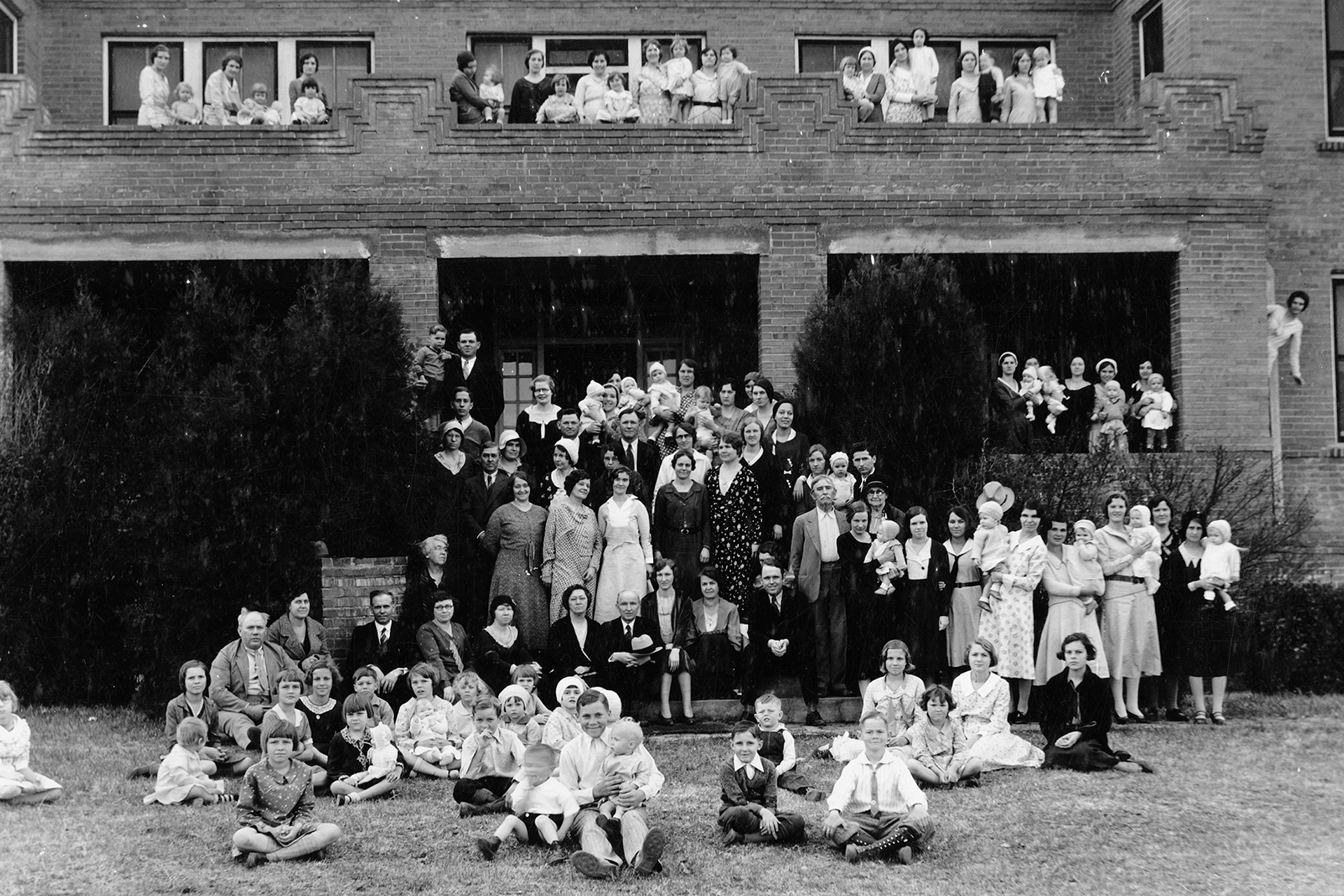
The Berachah Home Part 3 of 3: A Day in the Life of the Girls
This essay concludes our series on a unique Arlington institution and is based on the Berachah Home’s admission records and monthly publications. Unfortunately the archives do not provide any direct evidence of the home’s programs from the girls’ point of view.
From 1903 to 1935, the Berachah Home for the Redemption of Erring Girls opened its doors to thousands of needy young women, part of a network of homes established by the evangelical movement of the late 19th and early 20th centuries. In addition to bringing lost souls to God, this movement strived to build a better society focused solely on Him; the homes were but one of several ways to accomplish their lofty goals. Most evangelical homes kept the girls for six months and allowed them to put their babies up for adoption as they learned how to function in society.
As we have seen in the previous two essays, the Berachah Home’s founders, Reverend J. T. Upchurch and his wife Maggie, were certainly committed evangelicals, dedicating their lives to serving the girls who needed them most. However, the Upchurches went above and beyond most evangelicals, offering a more comprehensive program to their “erring girls.” Girls admitted to the Berachah Home not only found a path to redemption, they were taught to become self-sufficient and thrive in society. Each girl’s personal strengths were identified and developed for at least one full year. Furthermore, pregnant girls agreed to keep their babies. Each day was filled with educational and experiential opportunities designed to prepare the girls for life after the home. It’s important to note as well that the program stressed Christian values and the power of prayer. Prayer was the backbone and scheduled throughout the day, with the girls organized into small groups called prayer bands that met and prayed in specific locations. They could be called to prayer at any time, and all day and all night prayer services took precedence over daily routines at any time for any reason.
Life at the Berachah Home began with admission. The earliest admissions ledger showed that accepting Christ as one’s savior was mandatory for acceptance. Entries show some of the girls came to the home already saved, but many were admitted because they were saved on the spot. Ledger entries were also amended when the girls were dismissed, most commonly for not really having been saved after all.
The admissions process eventually became more pragmatic. After a girl (or an interested party) submitted an application, the staff would decide whether to interview her. Personal salvation was no longer compulsory at the time of admission but was expected within six months. The home focused on getting to know the girls, finding their strengths, and guiding them to Christianity. Each girl had to give up bad habits like dipping snuff and drinking whiskey—and any expectation of privacy (for example, the matron would read all incoming and outgoing mail). Pregnant girls had to sign a contract agreeing to stay at the home for one year and keep her baby. (In the 1920s the contract was increased to two years.) Finally, the contract stated that the girl’s time with her own family would be limited for her own protection. These measures, along with living in a home built on Christian values, provided a sound path for leading young girls to Christ.
The Berachah Home accepted around 30 to 40 girls per year who rotated through the program as other girls prepared to leave. (The size of the staff varied over the years but initially there were about 6.) Daily life followed an established routine. Church services were held every Sunday morning, followed by an afternoon of Sunday school, then another church service in the evening. The first Sunday of every month was Missionary Day, a day spent learning about Christianity around the world and the missionary work sponsored by the home. On Wednesday nights, prayer services were held. There was also an all-day church service on the second Thursday of every month. The girls were kept busy the rest of the week preparing for life after the Berachah Home.
Every weekday morning the girls dressed themselves and their babies, dropping them off at the Children’s Home—first an area of the main house, later a separate building—by 6:45 am for a day of meals, play, and an introduction to Biblical scripture. At 6:00 pm, the mothers took over childcare again, sometimes helping each other. The girls’ day was considerably more structured. After dropping off their children, they met for morning prayers at 7:00 am, followed by breakfast. After breakfast the girls went to school, work, or a combination of both.
During the early years, girls with a limited education were taught to read, write, and solve elementary math problems. As the years passed, Reverend Upchurch came to understand the value of a good education. By 1919, his school program offered reading, spelling, arithmetic, grammar, penmanship, Bible, and Hebrew history at a high school level. Art and music classes were also offered. Even a nursing class was developed. Longfellow, Tennyson, and Shakespeare were part of the reading curriculum, and the girls would play a game identifying quotes from the classic authors along with the Bible. Hours for the school were 8:30 am to 12:00 pm and from 1:00 pm to 4:00 pm.
Biblical training was another aspect of life at the Berachah Home, and there were additional special classes two evenings per week for those hoping to become ministers. Girls destined for missionary work also learned about the areas where they would be stationed. The girls were also provided hands-on experience working with Maggie Upchurch in the slums of Dallas.
The education offered at the Berachah Home also trained girls for the editing and printing trades. Girls with exceptional spelling and grammar skills learned to publish materials for the home and were taught all aspects of the business: they cleaned the office, maintained the equipment, edited and printed the materials. Girls planning to work in an office also had additional training on how to maintain professional relationships with men and avoid sexual harassment. Occasionally, a girl might stay on and join the staff at the home.
Household arts were also taught; sewing, cooking, cleaning, and laundry were skills practiced and perfected at the home. For a small fee, the girls offered laundry services to the general public. Other girls also learned how to plant and grow food; the Berachah Home’s impressive garden and orchard provided food for the home and a learning opportunity for the girls. In the summer months, the girls would earn extra money for the home by helping local farmers in their fields.
In addition, the home emphasized teaching the girls how to express themselves in public and to become useful citizens. In 1911, Reverend Upchurch and his wife established the Zeta Sigma Society to help the girls gain the confidence required to function in society. They worked together to make presentations on various topics. They also played games and sang songs, and each meeting concluded with refreshments and prayer.
The stated goal of the Berachah Home program was to prepare the girls for leading a Godly and productive life in the real world. However, it was not for everyone; some were not interested in keeping their babies, while others mistakenly thought they were, only to leave the program early. Although Reverend Upchurch boasted a 75% success rate, without more information from the girls themselves, this statistic cannot be validated. Certainly the girls who stayed at the home put a tremendous amount of work into preparing for independent lives. The history of the Berachah Home provides a remarkable example of evangelical progressivism in Arlington in the early years of the last century.

